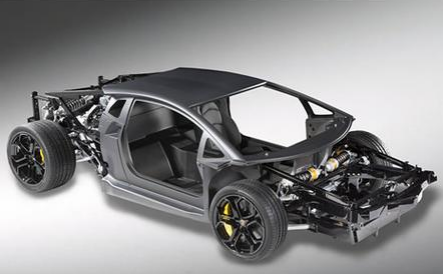1. Introduction
Just 24 hours ago, a major additive manufacturing conference in Germany highlighted a sharp rise in demand for spherical titanium powder—especially Ti6Al4V—for aerospace and medical implants. But with soaring interest comes confusion: users are mixing up grades, overpaying, or mishandling reactive titanium dust. If you’re working with titanium powder, whether for 3D printing, coatings, or research, this guide solves the top 7 real-world problems you’re likely facing right now.

2. Problem #1: Confusing Different Types of Titanium Powder
Not all ‘titanium powder‘ is the same. Many buyers mistakenly order TiO2 powder (titanium dioxide) when they actually need pure titanium metal powder for additive manufacturing.
- Pure titanium powder is elemental Ti, used in 3D printing and metallurgy.
- TiO2 nano powder is a white pigment used in cosmetics, sunscreens, and paints—not for metal parts.
- Ti6Al4V powder (also called Ti64 powder) is a titanium alloy powder ideal for high-strength 3D-printed components.
Always check the material spec sheet before ordering. If you need titanium powder for 3D printing, look for ‘gas atomized titanium powder’ or ‘spherical titanium powder’—not HDH (hydride-dehydride) unless specified for your process.
3. Problem #2: Overpaying Due to Lack of Price Transparency
Titanium powder price per kg varies wildly—from $80/kg for coarse HDH grades to over $500/kg for high-purity spherical Ti6Al4V powder. The key is knowing what drives cost.
- Particle shape: Spherical = more expensive (better flow for 3D printing).
- Purity: 99.5%+ pure titanium powder costs more than lower grades.
- Alloy type: Ti6Al4V powder price is higher than pure Ti due to added vanadium and aluminum.
Compare titanium powder price across multiple titanium powder suppliers. Also, watch for hidden fees—some quote ‘titanium powder for sale’ but exclude shipping or customs for international titanium powder orders.

4. Problem #3: Mishandling Reactive or Pyrophoric Powders
Fine titanium dust can be pyrophoric—it may ignite spontaneously in air, especially if particle size is under 45 microns. This is a serious safety risk many overlook.
Always store titanium metal powder in argon-filled containers. Never expose it to open flames, sparks, or moisture. Use explosion-proof equipment in handling areas. And never confuse it with non-reactive TiO2 powder—titanium dioxide is stable and safe for consumer use.
5. Problem #4: Choosing the Wrong Powder for Additive Manufacturing
Using irregular HDH titanium powder in a laser powder bed fusion machine? That’s a recipe for failed prints. For reliable titanium powder additive manufacturing, you need:
- Spherical morphology (for good powder flow)
- Tight particle size distribution (typically 15–45 µm)
- Low oxygen content (<1000 ppm)
Ti64 powder is the industry standard for titanium 3D printing powder applications. Confirm that your supplier provides certificates of analysis for oxygen, nitrogen, and particle size.

6. Problem #5: Accidentally Buying Substitute or Impure Materials
Some vendors misleadingly label molybdenum powder or tungsten powder as ‘titanium alternatives.’ While moly powder and tungsten metal powder have their own uses (e.g., high-temp alloys), they are NOT substitutes for titanium.
Similarly, avoid confusing titanium nitride powder or titanium carbide powder with pure titanium—they’re ceramic compounds used for coatings, not bulk metal printing.
When you buy titanium powder, verify the CAS number and request a mill test report. Reputable titanium powder suppliers won’t hesitate to provide documentation.
7. Problem #6: Ignoring Related Material Needs (Molybdenum & Tungsten)
Many advanced projects require complementary powders. For example:
- Molybdenum disulfide powder (MoS2 powder) is used as a dry lubricant in high-temp environments.
- Tungsten carbide powder is common in wear-resistant coatings.
- TiB2 powder (titanium diboride) enhances hardness in composites.
If your application involves hybrid systems, source molybdenum powder suppliers and tungsten powder suppliers from the same trusted network to ensure compatibility and consistent quality. Check molybdenum powder price and tungsten powder price per kg alongside your titanium quote for budget accuracy.
8. Problem #7: Not Knowing Where to Buy Reliable Titanium Powder
Avoid random online marketplaces. Instead, work with certified titanium powder suppliers who specialize in additive manufacturing or metallurgical powders.
Look for suppliers offering:
- Gas atomized titanium powder
- TiH2 powder (for controlled decomposition processes)
- Titanium nanopowder or TiO2 nano powder if needed for R&D
Also ask about titanium diboride price or titanium boride powder if you’re exploring composite materials. And remember—’titanium flash powder’ is a pyrotechnic mix, not industrial-grade material. Don’t confuse the two!
9. Conclusion
Working with titanium powder doesn’t have to be risky or expensive—if you know what you’re buying and why. Always match the powder type (pure, alloy, oxide, or compound) to your application, prioritize safety with fine titanium dust, and compare titanium powder cost transparently. Whether you need titanium powder for 3D printing, research, or industrial use, clarity on specs and suppliers saves time, money, and headaches.
Our Website founded on October 17, 2012, is a high-tech enterprise committed to the research and development, production, processing, sales and technical services of ceramic relative materials such as 7. Our products includes but not limited to Boron Carbide Ceramic Products, Boron Nitride Ceramic Products, Silicon Carbide Ceramic Products, Silicon Nitride Ceramic Products, Zirconium Dioxide Ceramic Products, etc. If you are interested, please feel free to contact us.
